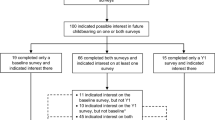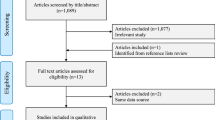Abstract
Prostaglandins may have both undesirable and desirable effects in malignant disease. Their possible roles in breast cancer were studied by examining the relationships between different variables and the amounts of prostaglandin-like material (PG-LM) extracted from 141 breast carcinomas. Univariate analysis indicates a direct correlation with patient age and menopausal status, with a greater yield from cancers of post- compared with pre-menopausal women. Tumours up to 2 cm diameter yielded more PG-LM than those measuring greater than 2-5 cm. Although there was also a direct correlation with bone metastasis near to the time of surgery, this was because no positive bone scans occurred in patients whose tumours yielded little total PG-LM (less than 16 ng PGE2 equivalents per g tissue). Since tumour PG-LM did not predict later spread to bone, and yields of greater than 16 ng g-1 were similar in the positive and negative bone scan groups, tumour PG-LM appears to be unimportant for skeletal metastasis. There was no obvious relationship of tumour PG-LM to the grade of malignancy, tumour type, amounts of fibrous tissue (and therefore malignant cells), invasion of blood vessels and lymphatics or presence of plasma cells. Multivariate analysis indicates that disease-free survival is longest with an intermediate production of tumour total PG-LM. Of the 82 patients now dead, the cause was attributed to metastatic disease in 69 cases. No relationship of PG-LM to the length of survival was seen with univariate or multivariate analysis. However, when just the post-menopausal patients who died within the first 3 postoperative years were analysed, there was a highly significant inverse correlation between the tumour total PG-LM and the time to death. The reason(s) for these different findings on overall survival compared with just the patients who died are not understood, but the results may indicate that one or more other variables must co-exist with a high tumour PG-LM to hasten death.
This is a preview of subscription content, access via your institution
Access options
Subscribe to this journal
Receive 24 print issues and online access
$259.00 per year
only $10.79 per issue
Buy this article
- Purchase on Springer Link
- Instant access to full article PDF
Prices may be subject to local taxes which are calculated during checkout
Similar content being viewed by others
Author information
Authors and Affiliations
Rights and permissions
About this article
Cite this article
Bennett, A., Stamford, I., Berstock, D. et al. Breast cancer, prostaglandins and patient survival. Br J Cancer 59, 268–275 (1989). https://doi.org/10.1038/bjc.1989.56
Issue Date:
DOI: https://doi.org/10.1038/bjc.1989.56
This article is cited by
-
Prostaglandin production in mouse mammary tumour cells confers invasive growth potential by inducing hepatocyte growth factor in stromal fibroblasts
British Journal of Cancer (1999)
-
Relation of malignant tumor to prostacyclin and thromboxane
Chinese Journal of Cancer Research (1995)



